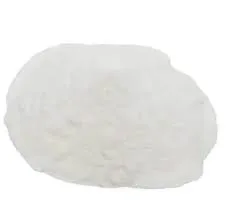
Dec . 06, 2024 00:59 Back to list
hydroxypropyl methylcellulose uses in tablets
The Role of Hydroxypropyl Methylcellulose in Tablet Formulations
Hydroxypropyl methylcellulose (HPMC), a cellulose derivative, has gained significant prominence in the pharmaceutical industry, especially in tablet formulations. This compound exhibits unique physical and chemical properties that make it an integral component in the development of oral dosage forms. In this article, we will explore the various uses of HPMC in tablets, highlighting its advantages and applications.
What is Hydroxypropyl Methylcellulose?
Hydroxypropyl methylcellulose is a white, odorless powder that is soluble in cold water but not in hot water. It is derived from cellulose, a natural polymer found in plants, which has been chemically modified to enhance its functionalities. HPMC serves multiple roles in tablet formulations, including as a binder, film-forming agent, controlled-release agent, and stabilizer.
1. Binder in Tablet Formulation
One of the primary uses of HPMC in tablet formulations is as a binder. Binders are essential in ensuring that the powdered ingredients in tablets adhere together, providing mechanical strength to the final product. HPMC's water-soluble nature allows it to form a gel-like consistency when mixed with water, resulting in excellent binding properties. This helps to create cohesive granules during the tablet-making process, reducing the likelihood of tablet crumbling and ensuring uniformity in size and shape.
2. Film Coating Agent
Another important application of HPMC is its use as a film-forming agent. When used in tablet coatings, HPMC provides a smooth and protective layer that enhances the tablet's aesthetic appeal and improves swallowing ease. In addition to improving the appearance, the film coating can also serve as a barrier to moisture, oxygen, and light, thereby prolonging the shelf life of the tablets. Furthermore, HPMC-based coatings can be engineered to be enteric, meaning they dissolve at a specific pH level in the gastrointestinal tract, effectively protecting the drug from degradation in the stomach.
hydroxypropyl methylcellulose uses in tablets

3. Controlled Release Mechanism
HPMC is widely recognized for its role in controlled and sustained-release formulations. Its hydrophilic nature allows HPMC to swell and form a gel when in contact with bodily fluids. This property can be harnessed to modulate the release rate of therapeutic agents. By adjusting the concentration of HPMC in the formulation, manufacturers can create tablets that release the active ingredient over an extended period, leading to improved bioavailability and enhanced therapeutic efficacy. This is particularly beneficial for drugs that require precise dosing or have a narrow therapeutic index.
4. Stabilizer and Thickening Agent
In addition to its roles as a binder and film former, HPMC is also employed as a stabilizer and thickening agent in various formulations. It helps to maintain the uniform distribution of active pharmaceutical ingredients (APIs) throughout the tablet matrix, preventing segregation during storage and handling. This stability is crucial for ensuring that each tablet delivers the appropriate dosage of medication.
5. Compatibility and Safety
HPMC is generally recognized as safe (GRAS) by regulatory agencies and has an excellent safety profile when used in pharmaceutical applications. Its compatibility with a wide range of excipients and active pharmaceutical ingredients makes it a favorable choice for formulators. Additionally, its non-toxic, non-irritating nature ensures that it does not pose risks to patients when included in tablet formulations.
Conclusion
The versatility of hydroxypropyl methylcellulose has established it as a key excipient in the formulation of tablets. Its multifunctional properties allow it to act as a binder, film-coating agent, controlled-release polymer, and stabilizer, among other roles. As demand for innovative drug delivery systems continues to rise, the importance of HPMC will likely grow, further enhancing the efficacy and quality of oral dosage forms. Given its favorable safety profile and compatibility with various pharmaceutical ingredients, HPMC remains a cornerstone ingredient for researchers and formulators in the quest for more effective and patient-friendly medication delivery systems.
-
Versatile Hpmc Uses in Different Industries
NewsJun.19,2025
-
Redispersible Powder's Role in Enhancing Durability of Construction Products
NewsJun.19,2025
-
Hydroxyethyl Cellulose Applications Driving Green Industrial Processes
NewsJun.19,2025
-
Exploring Different Redispersible Polymer Powder
NewsJun.19,2025
-
Choosing the Right Mortar Bonding Agent
NewsJun.19,2025
-
Applications and Significance of China Hpmc in Modern Industries
NewsJun.19,2025







